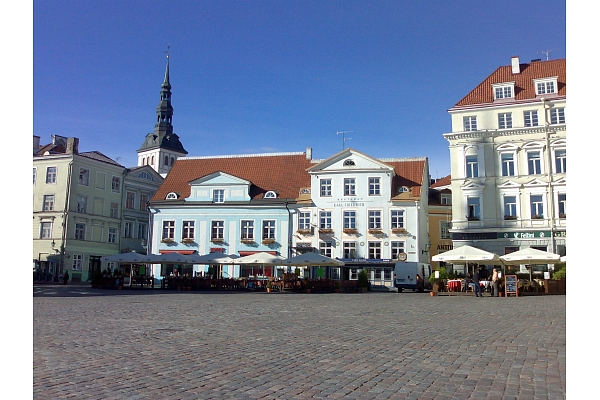Economy of Estonia
Forecasts of key indicators for 2012
GDP growth: 1,2%
Unemployment: 10,4%
Inflation: 3,0 – 3,5%
Estonia is considered one of the most successful examples of fiscal policy and of how to manage the development of a small economy.
During the crisis, Estonia experienced the most moderate decline among the Baltic countries; it recovered quickly and was able to join the European Monetary Union. It is one of the best according to the index of economic freedom and business environment assessment. Among the "new" EU member-states it is the third state (after Slovakia and Slovenia), which has introduced the euro – this took place in 2011.
During the years of rapid growth – the period from joining the EU in 2004 till the beginning of the global crisis in 2008 – Estonia was pursuing a rather conservative budget policy, accumulating national budget surpluses. These provisions helped the country to pass through the years of the crisis, without applying for the loans of the institutional lenders. Like other Baltic States, Estonia suffered from the crisis most gravely, since in previous years there were inflows of rather cheap and easily accessible loans into the national economy.
A highly developed national information and communication technology market, as well as close economic ties with the Nordic States led to Estonia becoming one of the most well-developed economies in the eastern and central Europe. In accordance with the World Bank’s methodology, Estonia is considered to be one of the wealthy countries. In 2010 Estonia has joined the OECD.
Development of the economy
Although the country has experienced sharp economic decline in 2008 and 2009, it has managed to emerge from the recession, and in 2011 Estonia’s GDP grew by 7,6% and was the fastest in the entire EU. At first, the recovery of the economy was mainly stimulated by the rise in exports, currently exports have stabilized and analysts no longer forecast a rapid increase, mainly due to global economic problems. Domestic consumption has been unexpectedly high.
Although the level of unemployment in Estonia remained relatively high, it has fallen rapidly. At the same time productivity has grown significantly and thereby, competitiveness in export markets.
Priority sectors
* The service industry makes up more than a half of the national economy. Estonia has a highly developed national information and communication technology sector. Estonia is Skype’s country of origin.
* The priority industries for the attraction of investments are: IT, transport and logistics, electronics, engineering, food production, business service sector and woodworking.
* Estonia is able to secure a domestic energy market. It is possible mostly due to oil shale deposits, however electricity production from renewable resources is developed as well. In future the country intends to increase the green energy proportion in its energy balance, thus attempting to attract investments also in this sphere.
* One of the most substantial spheres in the production industry is engineering and metalworking. Products in this sector are also among the most exported national products.
Risk factors
Until the adoption of the euro, there were doubts in Estonia that traders and manufacturers could use the currency switch to raise prices, but these doubts were not justified. In 2011, Estonia had inflation of 5,1%, which was mainly cause by the rise of oil and food prices on global markets.
However, by joining the eurozone, Estonia is more subject to the negative processes that are linked to the loss of confidence in the countries of the European Monetary Union. Nonetheless, the European Commission report on the economy published in 2012 ranks Estonia as among those countries, whose economies would suffer the least from turbulence in the eurozone.
Useful links
Ministry of Finance – www.fin.ee
Estonian Chamber of Commerce and Industry – www.koda.ee
Estonian Employers’ Confederation – www.employers.ee
Enterprise Estonia – www.eas.ee
Estonian Investment and Trade Agency – www.investinestonia.com
Bank of Estonia – www.bankofestonia.info
Statistics Estonia – www.stat.ee
Estonian Institute of Economic Research – www.ki.ee
Photo: Stock.XCHNG





